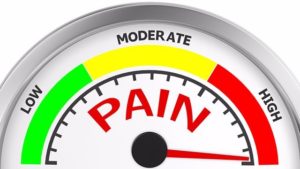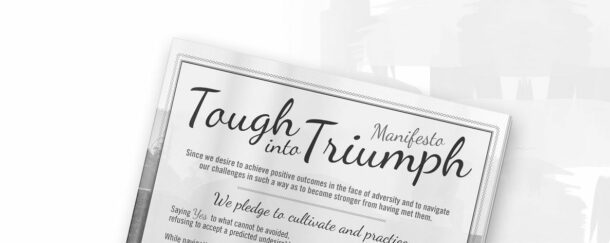
Given that 100 million people report experiencing pain, dealing with pain must be
one of the most significant of life’s lessons to master. Though we often wish one
another patience, prosperity and peace, pain in an evitable part of every human’s
experience. Physical and emotional pain draws attention to itself. Our knee jerk reaction is to recoil or run away from it. We employ drugs and alcohol to numb pain, and binge on food or streaming television shows to distract ourselves from it.
But as the opioid crisis is teaching us, we must be cautious about what we do to deal with our pain because the solution can often turn into the problem.
Athletes are fond of saying, “No Pain, No Gain,” which suggests that for them, some level of pain during a workout is a signal of progress in their pursuit of increased stamina, strength, and endurance.
As a dancer, we learned early on the difference between what we called, “good
pain,” and “bad pain.” As we stretched our bodies during warm-up, we would go to
the edge of what the body seemed to be able to do and at the first sign of “bad pain” we backed off and stayed on that edge for 30 to 60 seconds. Pushing further would likely tear the muscle and land us in the realm of “bad pain” with a need to rehab. Staying at their limit encouraged the muscles to release by themselves. In the next repetition, the dancer would find she could go further than on the first try. In this way, discomfort and pain are critical messages to know how to work with one’s body to improve flexibility without injury.
In the preparation for childbirth classes, I attended more than half a century ago, I
was warned not to describe all unpleasant sensations as “pain.,” since that can
trigger a recoil against the sensation. We learned to track and time our contractions
and practice breathing with them. We learned a type of breathing that inhibited the
urge to push because timing is everything and, until the cervix is fully dilated
pushing will produce pain rather that further the progress of the baby down the
birth canal.
As we learn more about the people who commit acts of gun violence we realize that such violence is a response to their own pain. When a person’s emotional pain is turned outward it can become bullying, physical assault, even murder. Turned in it becomes self-loathing and self-harm.
Perhaps expecting not to have episodes of pain or running from pain when it comes our way is not the best way to deal with it. A high school teacher and survivor of the Stoneman-Douglas High School gun massacre suggested another approach.
Teaching a class on the holocaust for many years, she has met survivors of that
atrocity and one women survivor told her that pain calls us to make meaning from
it, to act so that others do not experience it as we did because “pain is a terrible
thing to waste.”
Sheila
P.S. I will speaking at the upcoming Giving Care and Taking Care: A Dementia Caregiver Conference Hosted by Alzheimer’s Association- Greater PA Chapter on Nov. 19th if you know anyone who it would benefit.

